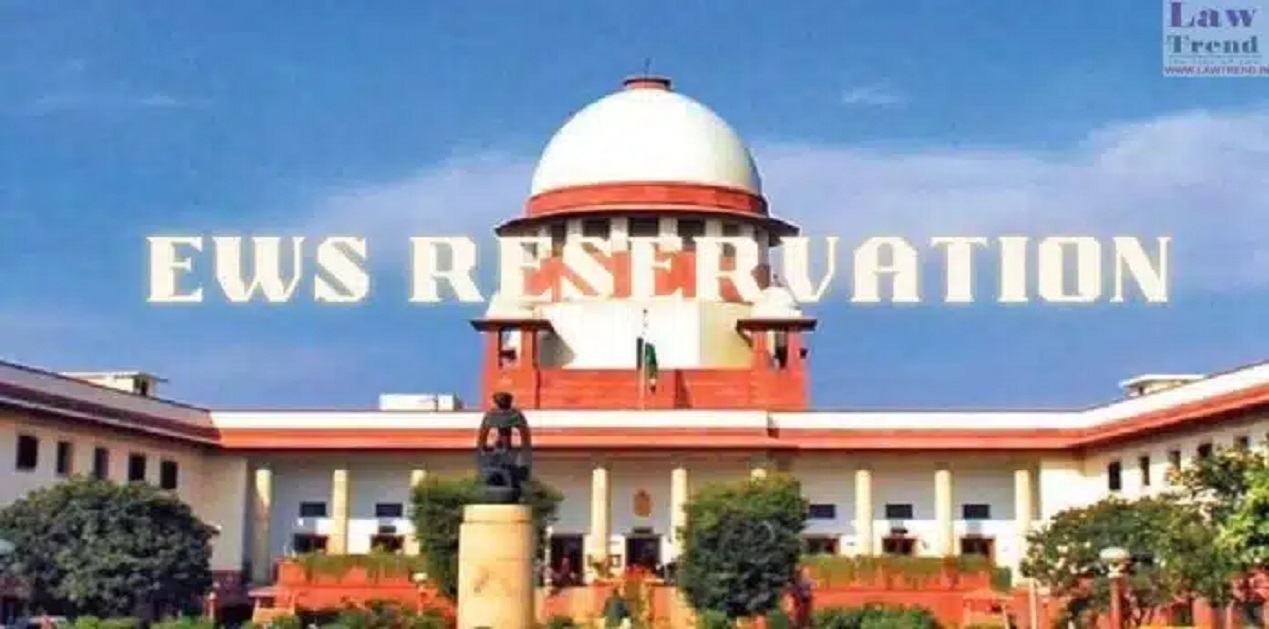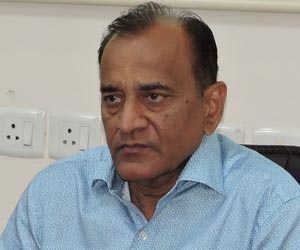On November 7, yet another milestone was established in the long journey of reservations in post-independent India, with the Supreme Court upholding the constitutional validity of 10 per cent quota for economically weaker sections (EWS) in government institutions. In a split verdict, a five-judge Bench, with a majority of 3:2, ruled that the Constitution (103rd) Amendment, which had come into effect in January 2019, was constitutionally correct. The amendment had paved the way for the insertion of Articles 15(6) and 16(6) in the Constitution of India, which in turn provided for reservations to the poorer sections of society (as per certain parameters the government had announced) that resided in the general category. Articles 15 and 16, which offer the narrative for equality without discrimination in various areas, provided for quotas and other schemes for Scheduled Castes/Scheduled Tribes and Other Backward Classes (OBC).
The matter had reached the apex court after a bunch of petitions challenged the government’s decision to extend the benefit of reservations on the economic criterion. Justices Dinesh Maheshwari, Bela M Trivedi and JB Pardiwala endorsed the amendment while the two other members on the Bench, Chief Justice of India UU Lalit and Ravindra Bhat, struck it down as being ‘constitutionally prohibitive forms of discrimination’.
However, it is to be noted that the two dissenting judges too had, per se, no objection to the use of economic criterion as a yardstick for quotas. They had problems with the exclusion of those already covered in caste-based reservation in the new formula, stating, ‘This court has for the first time, in the seven decades of the republic, sanctioned an avowedly exclusionary and discriminatory principle’. The two Justices maintained that the amendment ‘undermines the fabric of social justice and thereby the basic structure… the “othering” of socially and educationally disadvantaged classes’.
The court order effectively means that India, for the first time since independence, shall have two parallel forms of reservation — caste-based and economic level-based, and push the total reservation to 59.5 per cent in central government institutions. Justice Bela Trivedi noted that treating the EWS as a separate class would be a ‘reasonable classification’ since, just as ‘equals cannot be treated unequally, unequals cannot be treated equally’. Putting a lid on the question of whether the EWS reservation violated the basic structure of the Constitution, Justice Maheshwari affirmed that it did not because the earlier 50 per cent ceiling imposed by the court ‘is not inflexible’.
The context of the basic structure comes from the landmark verdict the apex court had delivered in the Indra Sawhney versus Union of India case in November 1992, by a nine-judge Bench. The Justices while dealing with petitions challenging the reservation for Other Backward Classes (OBC) — implemented by the VP Singh government in 1990 — had also gone into the question of whether reservations for economically weaker sections could be permissible under article 16(1). While acknowledging that eradication of poverty was among the ideals set out in the Preamble to the Constitution, the Bench added that ‘any reservation or affirmative action on economic criteria or wealth discrimination cannot be upheld under doctrine of reasonable classification’. The court further said, ‘Reservation for backward class seeks to achieve the social purpose of sharing in services which had been monopolised by few of the forward classes. To bridge the gap, thus, created the affirmative actions have been upheld as the social and educational difference between the two classes furnished reasonable basis for classification. Same cannot be said for rich and poor. Indigence cannot be rational basis for classification for public employment. Any legislative measure or executive action operating unequally between rich and poor has been held to be suspect’.
Similarly, the apex court held that reservations on the basis of economic conditions could not be valid under Article 16(4), as this provision, ‘by its very nature and purpose cannot be applicable to economically backwards, except probably when a proper methodology is worked out to determine inadequacy of representation of such class’.
The need for amendments to Article 16 (and Article 15), thus, becomes, clear when viewed in the backdrop of the Indra Sawhney verdict. It was just months before the 2019 general elections that the Modi-led National Democratic Alliance government announced reservations for EWS, over and above the overall 50 per cent quota already in existence for the Scheduled Castes/Scheduled Tribes and the Other Backward Classes. The amendment Bill had been supported in Parliament by most parties, though some (mainly regional outfits) had walked out in protest.
The November 7 judgment is significant also because it has established some firsts. One, of course, is that it has recognised the need for reservations on the basis of economic conditions. Two, it has held that the 50 per cent cap, until now inviolable, can be breached. Three, quotas can be individual-specific (poverty levels of a person), besides being community-specific (providing for a caste or tribe that is representative of all those who come under it). And four, it is for the first time that the Supreme Court has taken a step — albeit tentative — to shift focus from mere caste-based reservations.
The verdict has also raised an issue that has been the subject of heated discussion for decades — should the system of reservation have a time-bound shelf-life, or should its continuation in perpetuity be taken for granted? Justice Bela Trivedi and Pardiwala flagged the matter while upholding the constitutional validity of the 103rd amendment. Justice Trivedi noted, ‘What was envisioned by the framers of the Constitution, what was proposed by the Constitution Bench in 1985 and what was sought to be achieved on the completion of fifty years of the advent of the Constitution, i.e. that the policy of reservation must have a time span, has still not been achieved even till this day… However, at the end of seventy five years of our independence, we need to revisit the system of reservation in the larger interest of the society as a whole, as a step towards transformative constitutionalism’.
In a similar vein, Pardiwala said that reservations should ‘not be allowed to become a vested interest’ and that efforts should be made to get people out of the backward categories with a view to concentrating on those sections of society that genuinely need help.
Several affirmative discriminations have been resorted to, since the time of independence, including reservations for SC/ST, later for OBCs soon after the VP Singh government implemented the recommendations of Mandal Commission, and yet further with the addition of new classes to the list, and, for now, culminating in the extension of the benefit to the EWS. But it all began with the framers of our Constitution deciding to provide quotas for members of the SC/ST communities in a bid to create a level-playing field for those who had been historically disadvantaged and needed a push to be able to compete with the relatively privileged sections of society.
Presenting Article 294 of the Draft Constitution, BR Ambedkar had told the Constituent Assembly on 24 August, 1949, that the Article, providing for reservation of seats for SC/ST, was exactly the same as in the original draft, except that the provision for reservation for Muslims and Christians had been omitted ‘in accordance with the decision taken by this Assembly on that matter’. When a member, HJ Khandekar (representing CP & Berar: General), still tried to rake up the issue of quota for the minority community by saying that he just wanted to say ‘only one sentence’, the Chair firmly told him that the matter stood closed and that ‘even one sentence will reopen the matter’.
Article 295 was taken up the same day (24 August) and adopted, with the Chair remarking that ‘this is a non-controversial article’. However, it was the addition of a provision in the Article, which came to be known as Article 295-A, that was important. Ambedkar moved the addition of this provision in the following words: ‘Notwithstanding anything contained in the foregoing provisions of this Part, the provisions of this Constitution relating to the reservation of seats for the Scheduled Castes and Scheduled Tribes either in the House of the People or in the Legislative Assembly of a State shall cease to have effect on the expiration of a period of ten years from the commencement of this Constitution’ (italics added). It was to this and the subsequent continuation of the reservation system beyond the 10-year time span that Ambedkar had laid down, that Justices Trivedi and Pardiwala had referred.
Discussions on the new provision (295-A) continued the next day, i.e. 25 August, in the Constituent Assembly. A member from Madras: General, S Nagappa, suggested a caveat to the ten-year period: ‘Provided the people for whom seats… have been reserved are brought to the level of other advanced classes of people educationally, socially and economically’. The debate saw some amusing moments. For instance, when Nagappa spoke of equal opportunity to all — regardless of class, creed or colour, another member, Sardar Hukum Singh, wondered why ‘colour’ was being invoked. To which, Nagappa replied that while people from north India ‘may have a uniform colour’, south Indians, being ‘nearer the equator’, had a ‘different colour’.
Various amendments were moved to the Article. Responding to the discussions, including the issue of time-frame for the continuation of reservations, Ambedkar said that the decision ‘to limit the thing to ten years was really a decision which has been arrived at with their (members of SC community) consent’. He added, ‘If at the end of the ten years, the Scheduled Castes find that their position has not improved or that they want further extension of this period, it will not be beyond their capacity or their intelligence to invent new ways of getting the same protection which they are promised here’.
This ten-year deadline, whether taken from the day the Constitution was adopted or after the first general elections were held, has been breached several times over. There is still no clarity on whether, if at all, the reservation system will be abolished or replaced with another workable model.
(The paper is the author’s individual scholastic articulation. The author certifies that the article/paper is original in content, unpublished and it has not been submitted for publication/web upload elsewhere, and that the facts and figures quoted are duly referenced, as needed, and are believed to be correct). (The paper does not necessarily represent the organisational stance... More >>
Image Source: https://lawtrend.in/wp-content/uploads/2022/11/sc-ews-696x392.jpeg










Post new comment